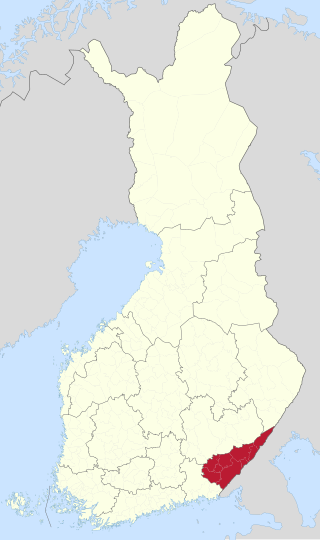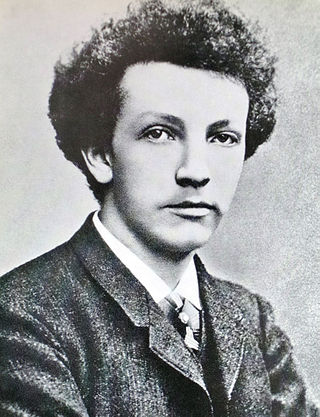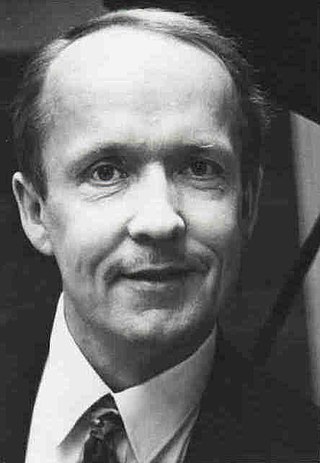Related Research Articles
Biosemiotics is a field of semiotics and biology that studies the prelinguistic meaning-making, biological interpretation processes, production of signs and codes and communication processes in the biological realm.
Zoosemiotics is the semiotic study of the use of signs among animals, more precisely the study of semiosis among animals, i.e. the study of how something comes to function as a sign to some animal. It is the study of animal forms of knowing.

South Karelia is a region of Finland. It borders the regions of Kymenlaakso, South Savo and North Karelia, as well as Russia.

In music, modernism is an aesthetic stance underlying the period of change and development in musical language that occurred around the turn of the 20th century, a period of diverse reactions in challenging and reinterpreting older categories of music, innovations that led to new ways of organizing and approaching harmonic, melodic, sonic, and rhythmic aspects of music, and changes in aesthetic worldviews in close relation to the larger identifiable period of modernism in the arts of the time. The operative word most associated with it is "innovation". Its leading feature is a "linguistic plurality", which is to say that no one music genre ever assumed a dominant position.
Inherent within musical modernism is the conviction that music is not a static phenomenon defined by timeless truths and classical principles, but rather something which is intrinsically historical and developmental. While belief in musical progress or in the principle of innovation is not new or unique to modernism, such values are particularly important within modernist aesthetic stances.

Eero Aarne Pekka Tarasti, is a Finnish musicologist and semiologist, currently serving as Professor Emeritus of Musicology at the University of Helsinki.
Sonorism is an approach to musical composition associated with a number of notable Polish composers. The scholar Józef Michał Chomiński coined the term "sonoristics" to describe the urge to explore purely sonic phenomena in composition, and from this term derived "sonorism" to describe an avant-garde style in Polish music of the 1960s that focused on timbre. As a movement, sonorism was initiated in the 1950s in the avant-garde of Polish music. Music that emphasises sonorism as a compositional approach tends to focus on specific characteristics and qualities of timbre, texture, articulation, dynamics, and motion in an attempt to create freer form. The style is primarily associated with an experimental musical movement which arose in Poland in the mid-1950s and flourished through the 1960s.

Vytautas Magnus University Agriculture Academy is a state institution of higher education and research in Lithuania, in Akademija, west of Kaunas.
The École Nationale Supérieure d'Ingénieurs des Systèmes Avancés et Réseaux (Esisar) is an engineering school of the Grenoble Institute of Technology.

Kaunas University of Technology is a public research university located in Kaunas, Lithuania. Established in 1922, KTU has been one of the top centers of Lithuanian science education. According to Lithuanian National University Rankings conducted in 2021, KTU was the second best university in Lithuania. The primary language of education is Lithuanian, though there are courses that are taught jointly in Lithuanian and English or solely English.

Gabriel Pareyon is a polymathic Mexican composer and musicologist, who has published literature on topics of philosophy and semiotics.

The International School of Information Management (ISiM) is the first Indian i-School and is an autonomous constituent institute of the University of Mysore, located in Mysore in Karnataka State, Southern India. ISiM was conceptualised and established in 2005, in collaboration with the leading information schools in the U.S – namely the School of Information at the University of Michigan, the School of Information Sciences at the University of Pittsburgh, and the School of Information Studies at Syracuse University, International Institute of Information Technology (IIIT) Bangalore, and Dalhousie University of Canada. ISiM was established with munificent grants from the Ford Foundation and Bangalore based Informatics India Pvt. Ltd.
Dario Martinelli is an Italian semiotician, musicologist and composer.
International Association for Semiotic Studies is the major world organisation of semioticians, established in 1969.

Raymond Monelle. was a music theorist, teacher, music critic, composer and jazz pianist. Monelle wrote three books, dozens of articles on music, and many music criticism reviews in newspapers, mainly for Opera and The Independent His main field of research was Music Signification or, as it is also known, Music Semiotics. Towards the end of his life he wrote a novel, yet to be published, entitled Bird in the Apple Tree, about the adolescence of the composer Alban Berg.
The following outline is provided as an overview of and topical guide to semiotics:

Elżbieta Magdalena Wąsik is a Polish linguist specializing in general linguistics and semiotics of communication, employed as professor extraordinarius at Adam Mickiewicz University in Poznań, Poland.

Zachris Usko Nyström, known as Usko Nyström, was a Finnish architect and one of the most influential professors of architecture at Helsinki University of Technology; among his students were later notable architects Eliel Saarinen and Alvar Aalto. One of the pioneering architects of the early Art Nouveau or Jugendstil style in Finland at the end of the 19th and beginning of the 20th century, he continued to influence generations of students by introducing them to the style. Many of his key architectural works were made while he was in the architectural partnership Usko Nyström─Petrelius─Penttilä which operated from 1895 to 1908. His most famous work is the Grand Hôtel Cascade (1903) in Imatra.

Cynthia M. Grund is an American philosopher and educator who as of August 2016 is Associate Professor of Philosophy at the University of Southern Denmark where she is also Research Director for The Aesthetics of Music and Sound project.

Laura Wright is a professor of English at Western Carolina University. Wright proposed vegan studies as a new academic field, and her book The Vegan Studies Project: Food, Animals, and Gender in the Age of Terror (2015) served as the foundational text of the discipline. As of 2021 she had edited two collections of articles about vegan studies.
References
- ↑ Tarasti, Eero 2015. Imatra starts: Founding of the ISI. In: Tarasti, Eero, Sein und Schein: Explorations in Existential Semiotics. Berlin: De Gruyter Mouton, 428–431ff.
- ↑ Martinelli, Dario 2016. Appendix: A short(pre)history of numanities. In: Martinelli, Dario, Arts and Humanities in Progress: A Manifesto of Numanities. Cham: Springer, 203–240.